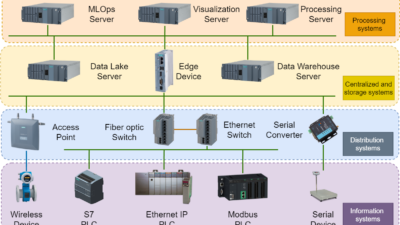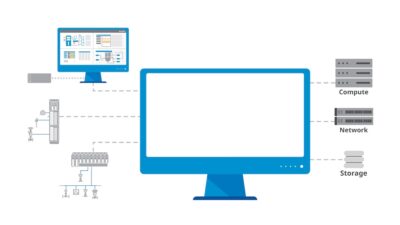Overview:
As manufacturers globalize their businesses and form new partner chains, they likely will outsource manufacturing and promote open innovation. That means sharing documents and product data without jeopardizing intellectual property (IP), the foundation of any company’s innovative products and processes.
IT platforms:
Adobe Systems is a provider of digital rights management solutions that leverage the Adobe LiveCycle ES Rights Management technology to enable more secure collaboration.
New Momentum offers Enterprise Risk Management solutions with tools to reduce operational risk and grow revenue and profits for companies in the high-tech, electronics, and pharmaceutical industries.
Secure collaboration
Just how prevalent is the concern for protecting IP among manufacturers? At least 75 percent of conversations Adobe logs with manufacturers end up centering on IP management, says Mike Morel, former director of manufacturing solutions, Adobe Systems.
“Manufacturers know their PLM [product life-cycle management], ERP, and other business solutions all have inherent security, and they want to leverage that existing infrastructure,” says Morel. They want to extend that infrastructure to securely deliver documents within business processes—and in workflow. So they must determine who can access the documents, and what they can do with those documents—and also afford dynamic changes to documents and business processes.”
Engineers, for example, work with CAD drawings and use a PLM solution, so it makes sense for them to share those drawings using the PLM solution, Morel explains. However, they also can securely send the drawing in 3D PDF using Adobe LiveCycle to purchasing agents and external partners so they too can use the document without any access to the CAD system itself.
Let them drive
Secure collaboration is important to companies such as Allgaier Automotive GmbH , a German company that designs and manufactures molding tools primarily for the automobile industry. The company routinely exchanges 3D models with its customers and suppliers, but rather than using email, Allgaier uses the IQweb Review platform created by Munich-based Adobe partner IPEQ .
Based on Adobe’s Acrobat 3D software and LiveCycle software suite, the Internet platform for distributed, industrial product development supports collaboration among departments and business partners via secure exchange of 3D models.
One of the biggest benefits to using the system, says Ralf Schmidt, manager of engineering and construction for Allgaier, is user rights can be defined to enable or restrict features such as open, print, copy, or download based on topic, project, or partner company. The sender also can later revoke access to a file if critical changes are made to the initial CAD drawing, so the original can no longer be accessed, he says.
“It’s also possible to define a time frame for a recipient to open a 3D model file,” Schmidt says. “That requirement may be part of the agreement when a contract is awarded, so access expires when the contract ends.”
War on the gray market
Today a business environment exists in which counterfeit IP is not only lucrative, but also more attainable than ever before, says Chris Jensen, VP of New Momentum. Counterfeiters are increasingly tech-savvy, and their ability to obtain more advanced manufacturing machinery and techniques has been one of the most crucial factors in fueling the production of illegal high-tech goods.
| Counterfeiting crimes by the numbers • The Alliance for Gray Market and Counterfeit Abatement ( AGMA ) and advisory firm KPMG say the value of gray market information technology (IT) products alone averaged $58 billion in 2007. • The U.S. Chamber of Commerce estimates the U.S. economy loses between $200 and $250 billion in annual sales due to counterfeiting, while the world economy is robbed of about $650 billion annually. • The World Customs Organization ( WCO ) estimates of all goods sold worldwide in 2007, between 7 percent and 10 percent are believed to be counterfeit. • Counterfeit products are believed to have cost 750,000 jobs in the U.S. alone, as estimated by The U.S. Chamber of Commerce. |
“During the past decade, billions of dollars in foreign direct investment have flowed into a number of developing countries, such as China, leading to the proliferation of sophisticated manufacturing processes and capabilities to produce high-tech products,” Jensen says. “Counterfeit components have long been a problem in the electronics industry, but as of late, companies are finding themselves increasingly challenged.”
A second contributing factor is the popularity of e-commerce, Jensen says. Many counterfeiters use the Internet to reach potential buyers, and, without regulatory bodies able to police and govern all product-listing sites or advertisements sent out via email, the Web has become a bastion for illegal sales of counterfeit products, she says.
| "A big part of expanding the global footprint of an organization is in the supplier and partner community. In many cases, this involves sharing critical intellectual property in regions where there isn’t an equal view of copyright protection."— Dennis Gaughan, VP, AMR Research |
Manned intelligence
One Tier 1 global enterprise found that the combination of setting up an “intelligence” department within the company, and a new Brand/Intellectual Property Protection software solution from New Momentum protected their brand and their revenues.
Within the first 30 days of working with New Momentum, the company identified more than 500 instances of products that were either unauthorized, or counterfeits that hadn’t shown up using a previous system. And the company continues to discover new unauthorized companies that are selling its products; high quantities or unexpected quantities of products being bought and sold, which usually indicates counterfeits or gray market sales; and patterns of activity that are characteristic of unauthorized sales or counterfeits.
With the data supplied by New Momentum, the company approaches partners that are selling unauthorized products, brokers buying and selling on the gray market, or companies buying/selling counterfeits—and makes an effort to turn them into legitimate distributors selling authorized products at the appropriate price and quality levels. ( See graphic )
The result is violators either become authorized distributors or they realize that they have been discovered, and cease operations. Executives for the Tier 1 believe the combination of the company’s internal intelligence group, management participation, and the New Momentum solutions better protected their brand, IP, quality, and revenues.



